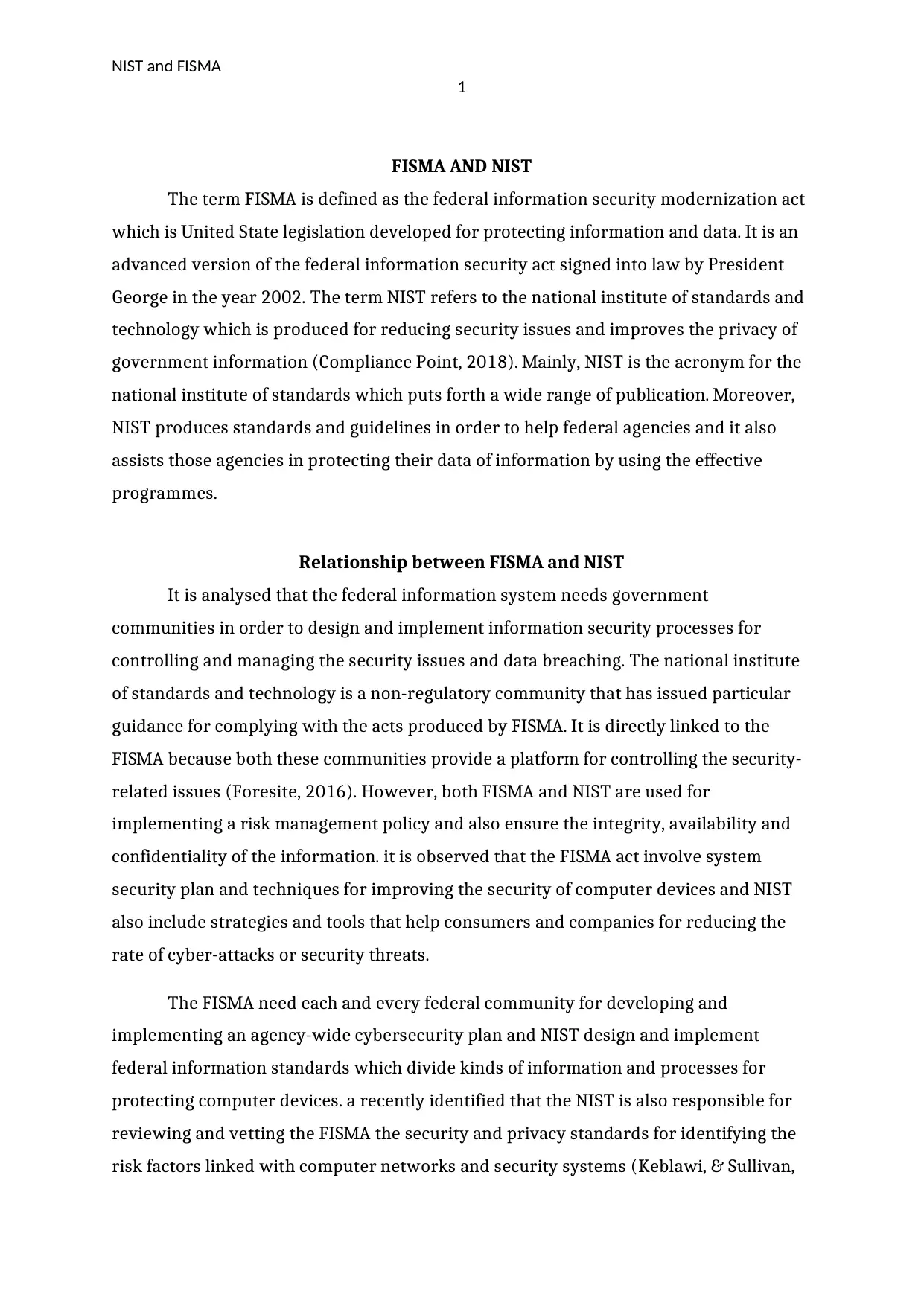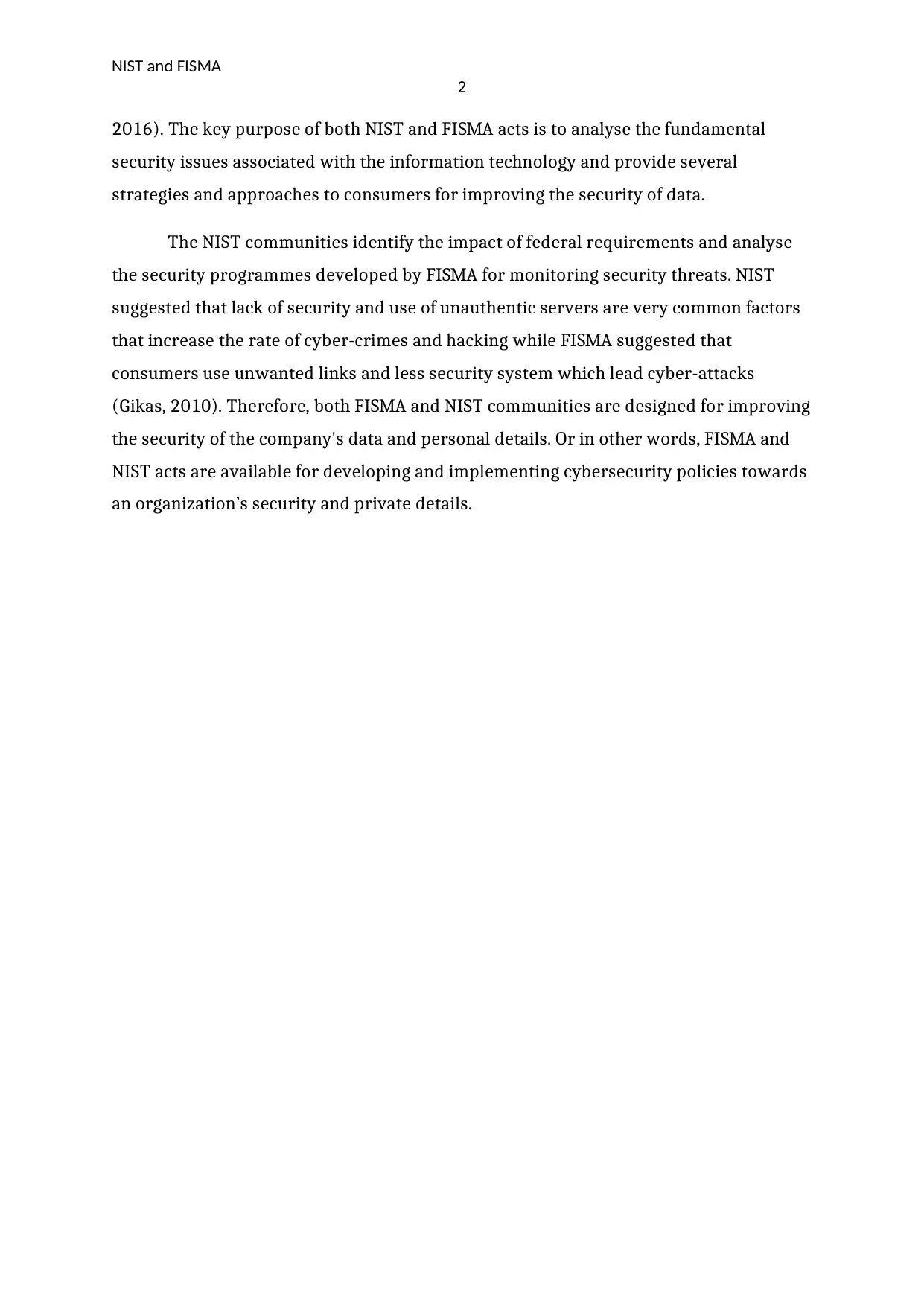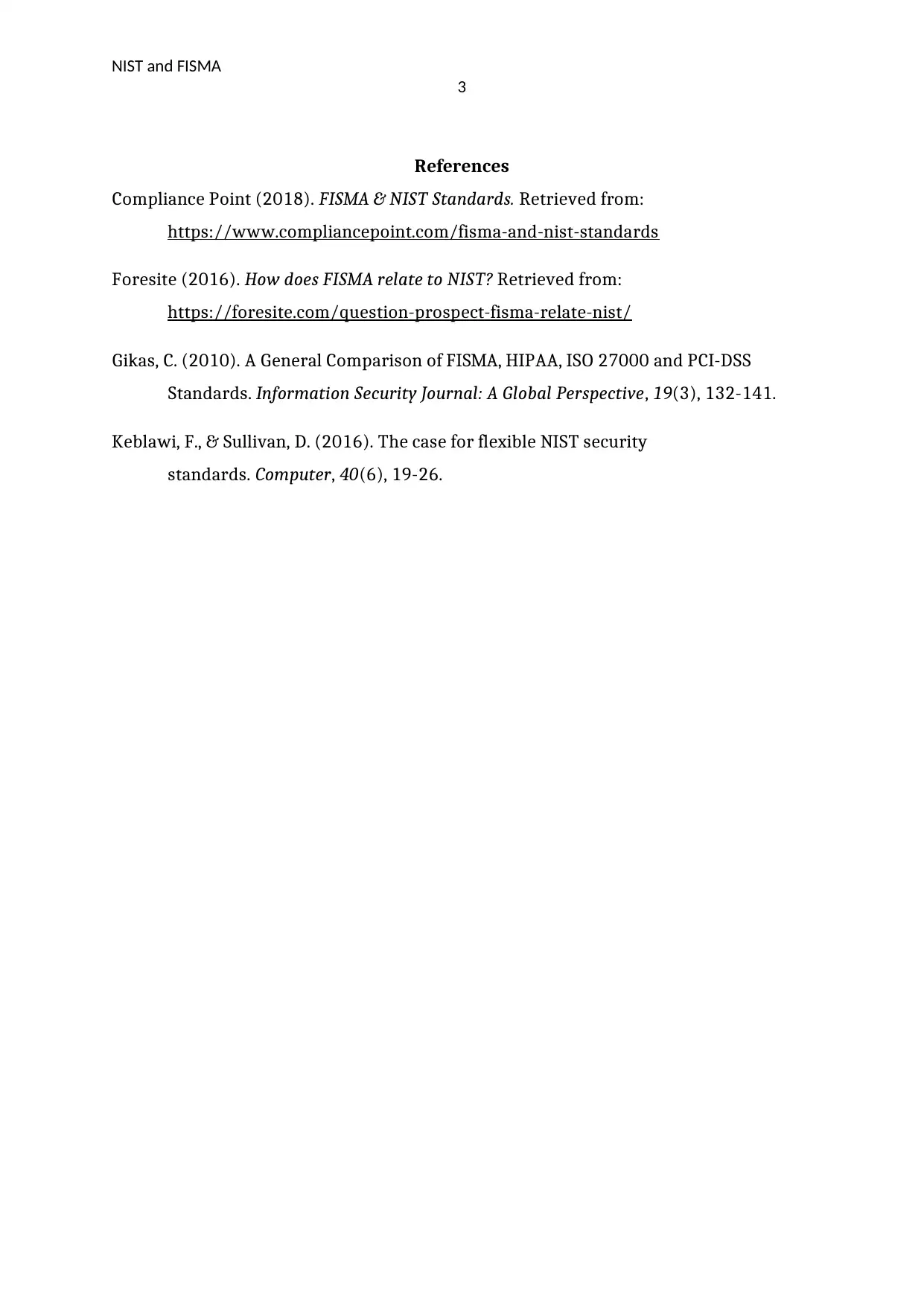NIST and FISMA: A Comprehensive Analysis of the Relationship
VerifiedAdded on 2023/01/23
|4
|635
|21
Report
AI Summary
This report delves into the relationship between the National Institute of Standards and Technology (NIST) and the Federal Information Security Management Act (FISMA). It explains how NIST provides guidelines and standards to support FISMA's goals of protecting federal information and systems. The report explores how FISMA mandates security measures and establishes a framework for agencies to manage information security risks, while NIST provides the specific technical standards and best practices to achieve these goals. It highlights the importance of both for cybersecurity, detailing how they work together to ensure the integrity, confidentiality, and availability of data. The report references key publications and research to illustrate the practical application of these standards, emphasizing their role in reducing cyber threats and improving data security within government agencies. The report also emphasizes the importance of NIST and FISMA in developing and implementing cybersecurity policies and protecting sensitive information.
1 out of 4











![[object Object]](/_next/static/media/star-bottom.7253800d.svg)